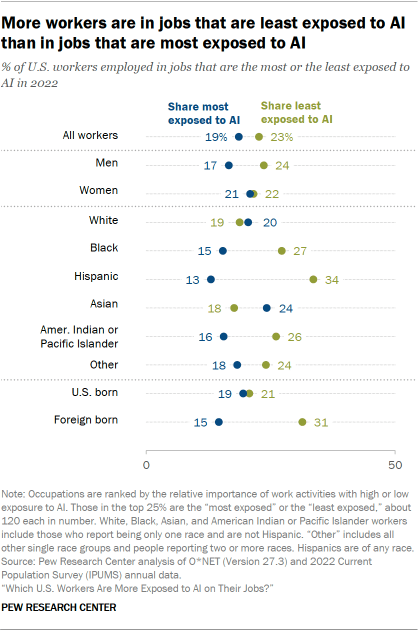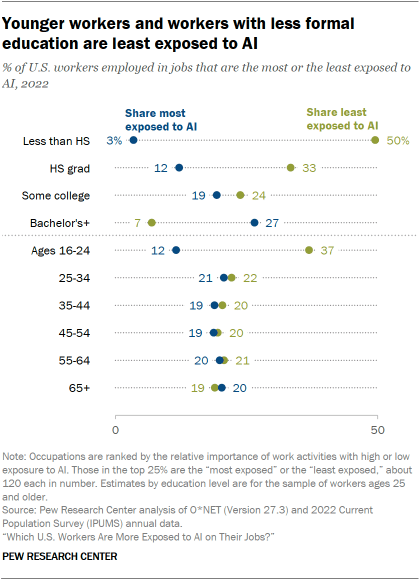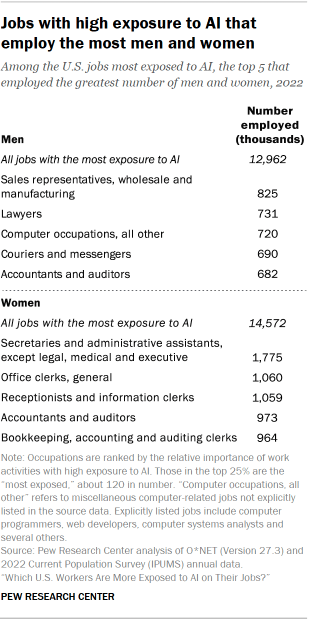Although artificial intelligence may appear to be everywhere all at once, workers overall are more likely to be in jobs that are the least exposed to AI than the most exposed. In 2022, nearly one-in-four U.S. workers (23%) were employed in the least exposed jobs, compared with one-in-five workers (19%) in the most exposed jobs, our analysis found.

This difference applies across most groups of workers, arising from differences in the types of jobs they do. For instance, men are more likely than women to work in jobs in which physical or manual tasks are performed, such as in construction, production, repair and maintenance occupations. Our analysis shows that 24% of men worked in jobs that are least exposed to AI in 2022, while 17% were in the most exposed jobs. However, women are about equally likely to work in jobs that are the most or the least exposed to AI.
Black, Hispanic, and American Indian or Pacific Islander workers are more likely than other racial and ethnic groups to be employed in the least exposed jobs by large margins. For instance, only 13% of Hispanic workers are in jobs that are the most exposed to AI, compared with 34% who are in the least exposed jobs. Black and American Indian or Pacific Islander workers are more likely to be employed in the least exposed jobs by a margin of about 10 percentage points each. Asian workers, who are more likely than average to work in professional and technical occupations, are a notable exception: Their share in the most exposed jobs exceeds the share in the least exposed jobs by a margin of 6 points.

The share of foreign-born workers in the least exposed jobs is about double the share in the most exposed jobs – 31% vs. 15%. This is perhaps because about half of the foreign-born workers in the U.S. are Hispanic, and foreign-born workers overall are more likely to work in construction, maintenance occupations and production occupations.
Half of workers without a high school diploma and a third of those with a high school diploma only hold jobs with the least exposure to AI. Workers with these levels of education comprised about 31% of the U.S. labor force ages 25 and older in 2022. But only 7% of workers with a bachelor’s degree or higher level of education – 44% of the U.S. workforce 25 and older – are in the least exposed jobs.
Except for those ages 16 to 24, about one-in-five workers in all age groups are likely to see either a high or a low degree of exposure to AI. The youngest workers are about three times as likely to work in the least exposed jobs as in the most exposed jobs – 37% vs. 12%.

A handful of occupations account for large shares of men and women who have high exposure to AI
Overall, nearly 13 million men and 14.6 million women were employed in 2022 in occupations that have the most exposure to AI. Among these occupations, some 825,000 men worked as sales representatives alone. The top five jobs for men among the most exposed occupations accounted for a total of 3.6 million jobs for them, representing 28% of all men facing the greatest exposure to AI.
This concentration is even more pronounced for women. Some 5.8 million women who face the most exposure to AI on their jobs were employed in just five occupations, representing 40% of the total. These jobs are largely administrative in nature, with accounting and auditing jobs exposing large numbers of both men and women to AI.


